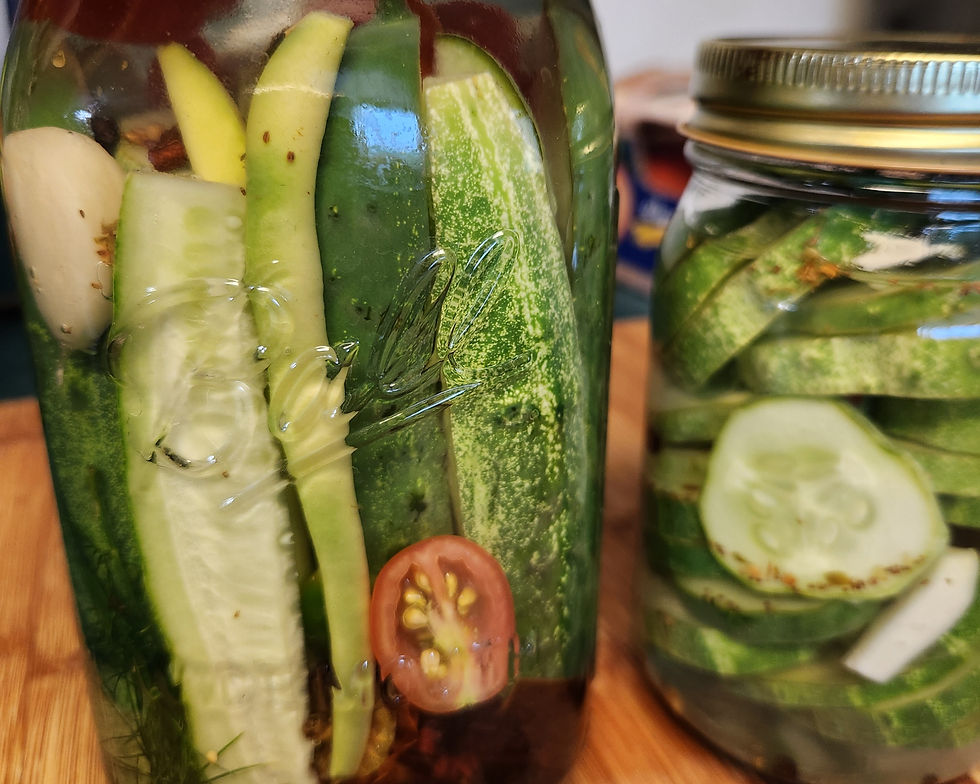Garlic Growing tips
- maybcrazygarlic
- Jun 3, 2024
- 3 min read
Updated: Sep 19
Choosing your Garlic
Garlic varieties fall into two different types: hard neck and soft neck. We always recommend that you do the research and see what varieties are suited to your agricultural zone. Hard neck is typically best for zones 2-6.
Hard neck – Most of our stock is hard neck which is not only better suited for our climate (Zone 5B) but tends to have stronger garlic flavor than the soft necks. Hard neck grows large, uniform bulbs with typically 4-8 good sized cloves around a stiff stem. They are hardy and can withstand our colder winters and springs. It requires a long cold period to do well, called vernalization.
Soft neck – Soft neck, as the name indicates has a softer stem. Flavor tends to be milder, and they consist of numerous, smaller cloves. They are better suited for milder climates as they do not need the cold temperatures that Hard neck does. We are currently testing out two soft neck varieties, Inchelium and Blanco Piacenza to see how they do in our zone.
Prepping your Beds
Garlic grows best in loose, well-drained soil. It is recommended that the area get at least 6-8 hours of sunlight. We recommend doing a soil test with your local cooperative extension office to determine if you need any amendments. Garlic prefers a PH of 6.5 – 7.0. Working in some compost or organic matter helps tremendously as well as an all-purpose fertilizer.
Planting your Garlic
In our zone we plant in mid-October to mid-November or at least 4 weeks before the frost. Separate your cloves immediately before planting and plant at least 6” apart and 3-4” deep. Mulch well using hay, straw, grass clippings or leaves. All there is to do after that is wait until spring!
Caring for Garlic
Early in spring (Mar-Apr for us) the garlic will start to peek through the mulch. At this time, you can remove the mulch or leave it for a while. We keep it on through April as we often get snow at this time, and it is another level of protection for the young shoots. This is also a good time to fertilize again. We remove the mulch by the end of April, especially if it is rainy so that the beds do not retain to much water.
Around June the hard neck will send up flower buds, known as scapes. These need to be trimmed off so that the garlic uses all its energy to grow a large bulb rather than flower. Once the scapes start to curl around, we cut them off at the base where it emerges from the stalk. These are delicious! And can be eaten as you would scallions or spring onions.
The garlic is then left to do its thing until harvest. You will know when to harvest as the leaves begin dying off starting from the bottom of the plant. When at least 50% has died off it is time to harvest. You can also pull a bulb and cut it crosswise to check the progress. The cloves will have pulled away from the center stem when it is ready.
If your soil is loose you can pull the garlic, if not use a spade to carefully loosen the soil and then pull. In order to store long term, you will need to “cure” your garlic by drying. Tie them into bunches and hand to dry in a warm place with good circulation. Depending on conditions curing can take 4-6 weeks. Once cured we remove the outermost papery layer to clean up, cut the stems leaving a few inches and cut the roots off. Your garlic is then ready for storage!

Comments